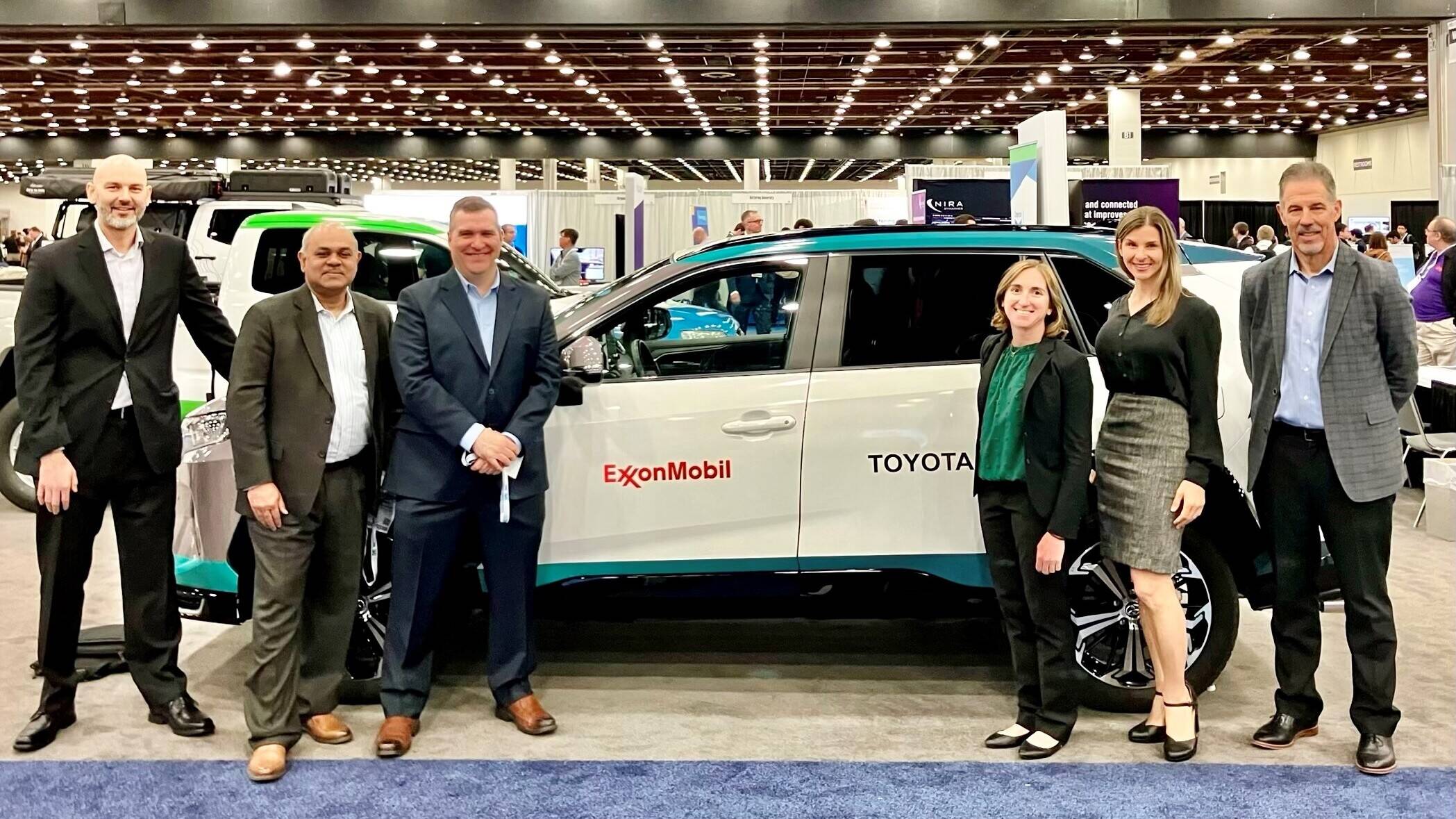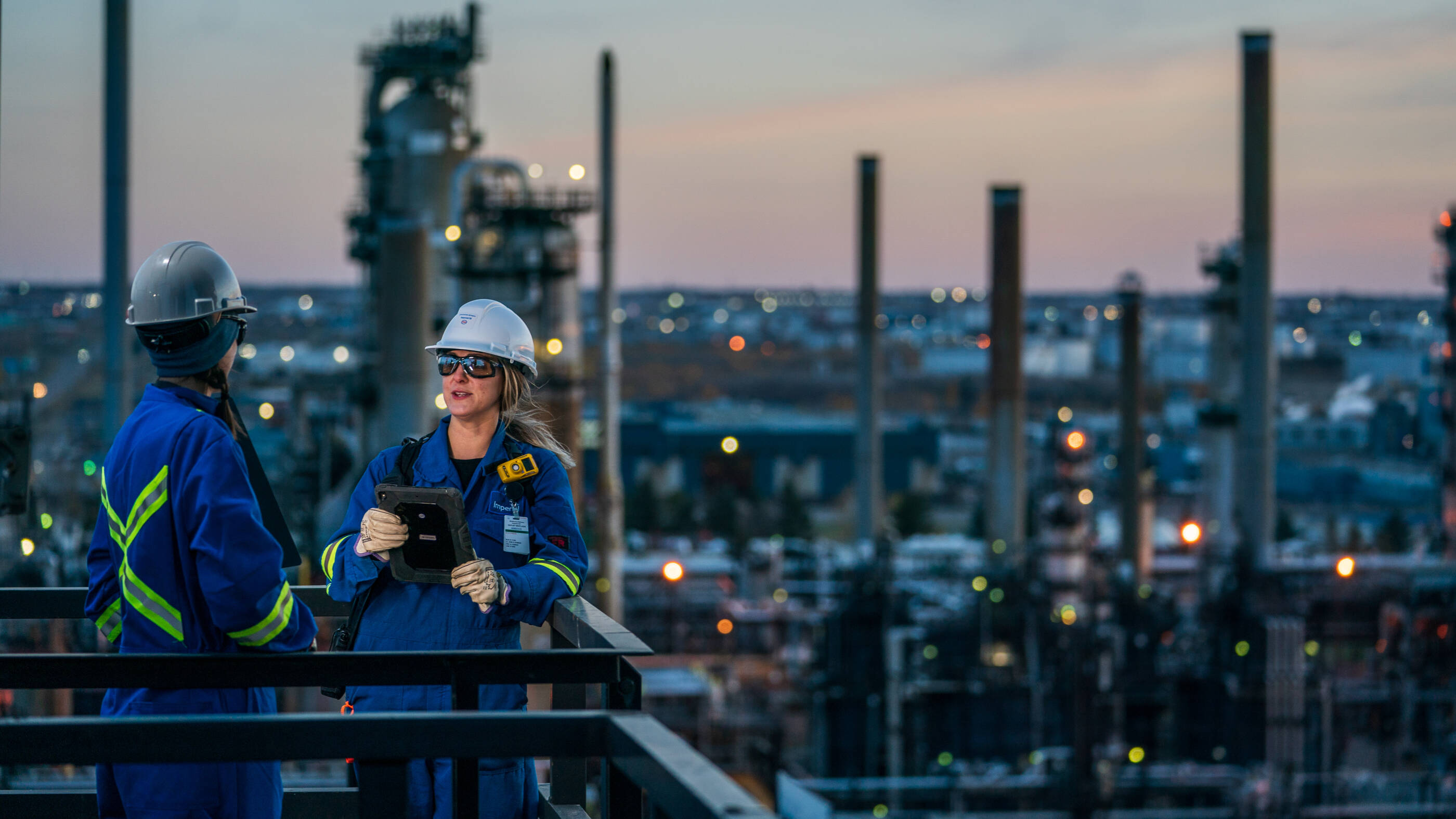selected item
3 min read
• May 28, 2024Expert spotlight: Brianne Kanach - from intern to advancing lower-emission fuels
Key takeaways:
- The American Fuel & Petrochemical Manufacturers featured Brianne in their We Make Progress campaign, celebrating her contribution to the industry.
- Some of the LEFs we've tested can potentially reduce lifecycle GHG emissions by 20-75% vs conventional fuels.
- Liquid fuels can pack more energy than other options and can be used in existing vehicles.
3 min read
• May 28, 2024
Brianne and colleagues experimenting with oil fluids early in her career. This photo was originally published in The Lamp in 2004.
Brianne Kanach stepped into ExxonMobil’s Products Research and Technology Center (in Paulsboro, NJ) as an eager intern 23 years ago. Three months later, she didn’t want to work anywhere else. “Once I saw how ExxonMobil valued science, heard opinions and invested in technology leadership, I realized this was the place for me,” Brianne said. Little did she know it would be the start of a multi-decade journey.
Today, Brianne’s mission is clear: reduce emissions for transportation. It’s a monumental task, but Brianne thrives on challenges. She likes to think of herself as an energy nutritionist for transportation and works day in and day out to get the ingredients right.
What's she working on? Lower-emission liquid fuels.
Liquid fuels can pack a lot of energy into a small place, compared to other alternatives. This is important for the heavy trucks we all rely on to move goods across long distances.
But more importantly, these fuels can go into the vehicle most of you have today. “Our global transportation fleet won’t change much in the next decade,” Brianne said. “People hold on to their vehicles—they’re reliable and expensive investments, and not everyone can afford the newest technology. We need to provide a solution that doesn’t require fancy upgrades—just a smart energy diet.”
“These fuels would allow drivers of millions of existing vehicles to reduce their emissions.”
Some of our formulations have the potential to reduce lifecycle GHG emissions by 20-75% compared to conventional fuels*
What's her goal? Reduce emissions while maintaining performance.
Petroleum-based fuels are like a power bar for energy and set the standard for performance. The rich ingredients blend seamlessly, keeping engines and modern life running.
But we’re evolving toward producing lower GHG emission alternatives that can be just as powerful. Imagine fuels derived from crops, or even waste materials, that can be converted into a fuel ready to pump in your car.
How's she doing it? Through evolving recipes.
This journey involves a dash of science, a pinch of creativity and a whole lot of testing. “We start by understanding energy needs,” Brianne said. “We chat with car makers, dig into their problems and leap over hurdles together, trying to match fuel power to application expectations.”
Scientists in lab coats cook up a fuel recipe in the lab, and then test in real engines—pushing them to the limits. Then it’s back to the lab to fine-tune the blend. Gradually, a fuel takes shape—one that could be produced commercially to power your vehicle.
It’s a constant evolution, learning from each stage. “We measure success by setting clear goals, trying out ingredients, demonstrating progress and identifying promising solutions,” Brianne said.
In recognition of her passion and contributions to lower-emission fuels, the American Fuel & Petrochemical Manufacturers is featuring Brianne in their We Make Progress campaign, and we couldn’t be prouder!
*Reductions in carbon intensity estimates are based on the lifecycle GHG emissions of the research fuels tested, compared to petroleum gasoline. Values are based on either GREET 2021 estimates or feedstock Proof of Sustainability documents. Actual results may vary.
Newsroom
Stay up to date with the latest news and information
Explore more

From lab to track: our LEFs power Red Bull KTM Factory Racing
2 min read
• Nov. 15, 2024
Can ships run on biofuel?
4 min read
• May 30, 2024
Fueling America's future with Toyota
2 min read
• May 9, 2024
Co-processing: Making tomorrow’s fuel with today’s facilities
2 min read
• April 17, 2024
Let’s deliver sustainable aviation fuel – with our existing infrastructure in France


